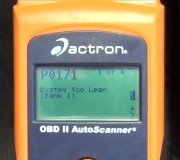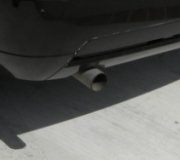I changed the plugs and wires, oil, topped off the water and changed a belt. I also looked at the timing belt which looks good!
Things I've done since include, (replace MAF, replace TPS, clean and check idle air control valve)
ok so I have a rough idle and intermittent missing while driving. I hooked up a "live data" scanner and recorded info.
Immediately a couple things jumped out at me.
1 is BOTH o2 sensors read a lean mix, when I add propane to intake they both jump to.9 volts then back down around.03 V (so I'm fairly certain the o2 sensors are NOT the problem.
2nd thing I noticed is the engine load at idle is around 40-50% WHOA NELLY! Seriously whats up with that? Fuel trims are very high 20-30% range
I removed exhaust manifold, and valve cover, all looks good. There. I checked all vacuum lines and they all seem connected and in good shape. Fuel pressure holds around 45psi with key on, also with engine running.
So at this point I'm assuming I either have an enourmous vacuum leak I cannot detect, or possible the map sensor is bad. Anyone have any ideas or something else I should be looking for with the live data. Remeber I just bought this car so have no idea of its maintenance and service history
Sunday, May 31st, 2009 AT 4:46 PM



